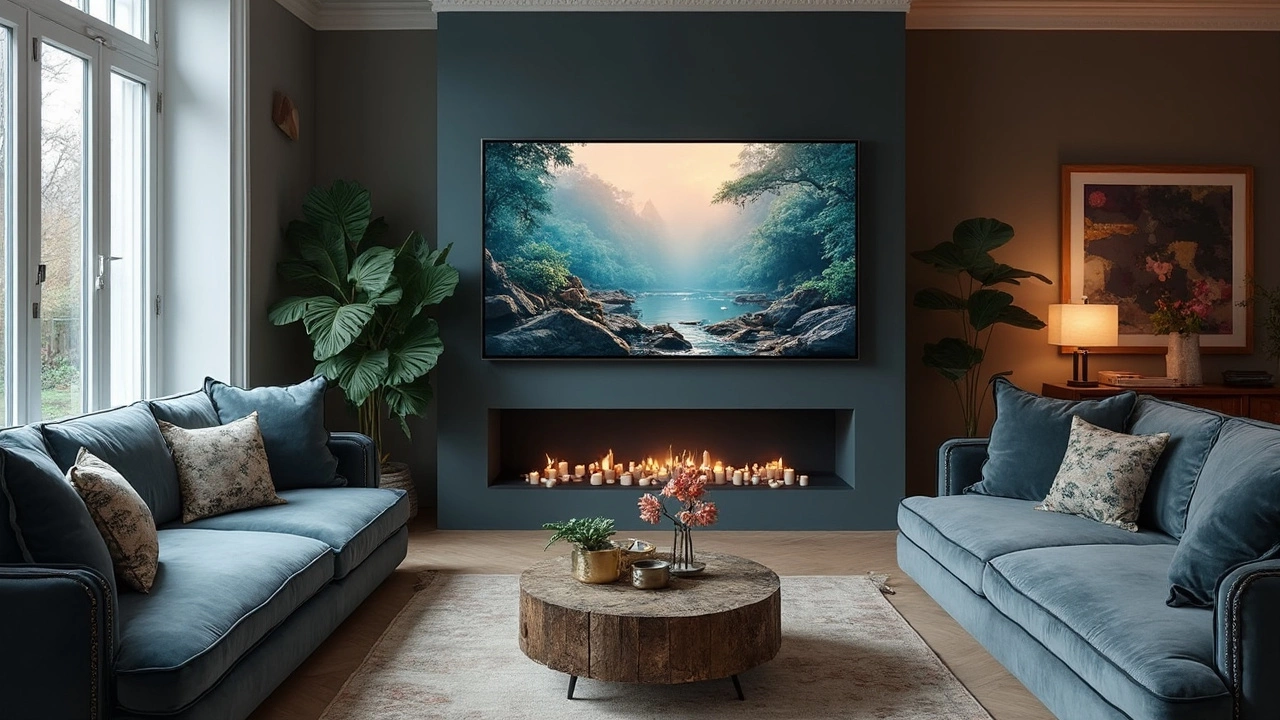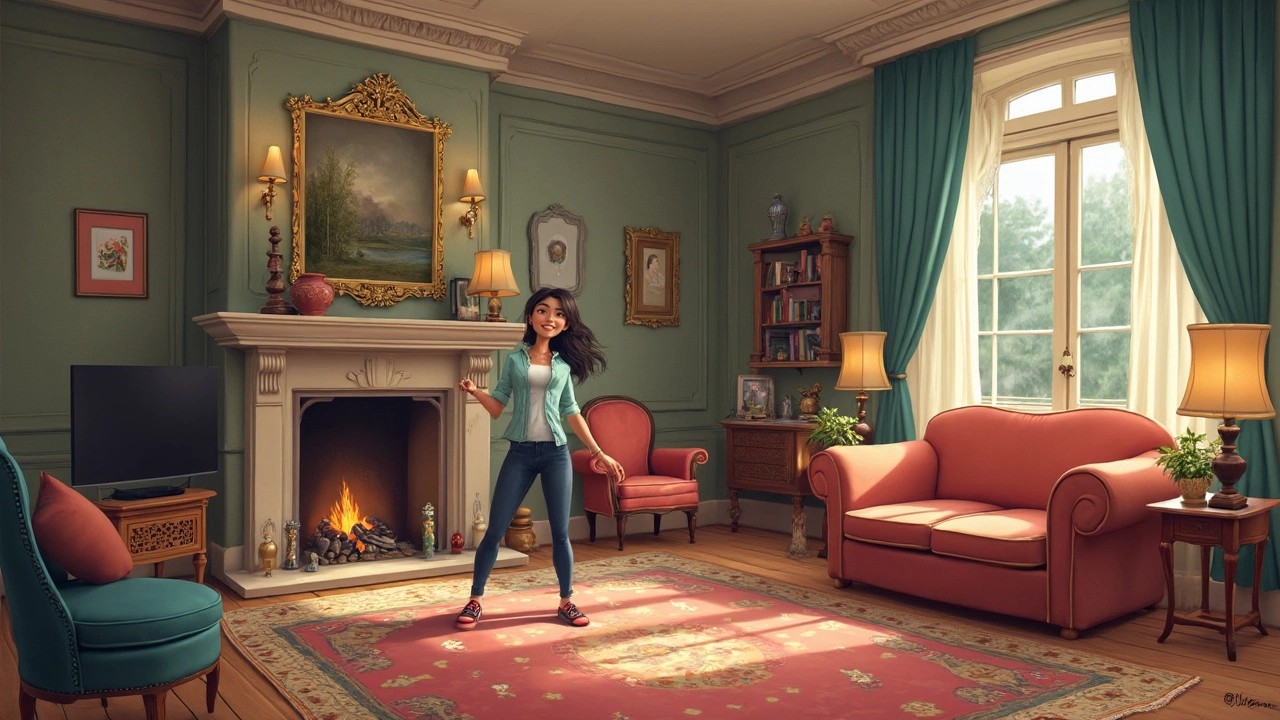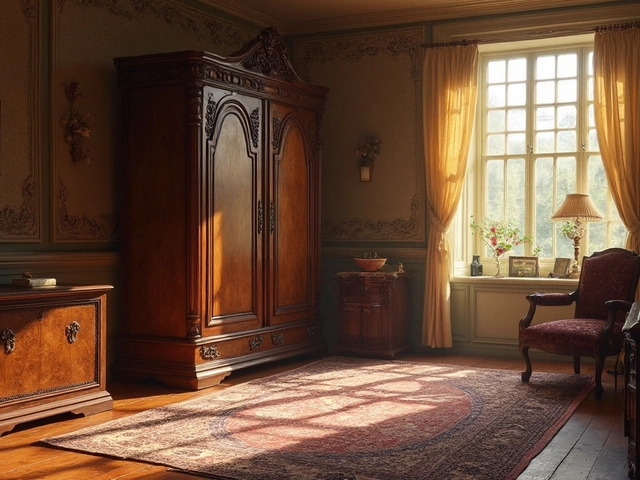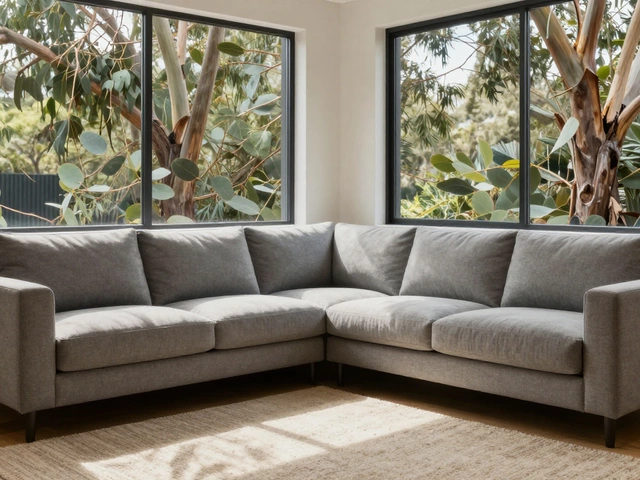 24
Feb,2025
24
Feb,2025
So, you're eyeing that upgrade from a 55-inch to a 65-inch TV, but you're wondering just how much bigger it's going to be. Well, in terms of width, you're looking at around an extra five to ten inches depending on the model. That might not sound huge at first, but in TV world, it can make a noticeable difference in your viewing experience.
TV manufacturers typically measure their screens diagonally, from corner to corner. So when comparing a 65-inch TV to a 55-inch one, the jump might seem linear, but the change in width feels more substantial because of the screen's aspect ratio. A typical 65-inch TV has a width of about 57 inches, while a 55-inch model is usually around 48 inches wide. So yes, it's not just a visual upgrade but a spatial one too.
- The Width Story
- Viewing Experience Impact
- Finding the Right Stand
- Room Setup Considerations
- Tips for Buying a New TV
- Maximizing Your Viewing Space
The Width Story
When it comes to upgrading from a 55-inch to a 65-inch TV, you're not just getting a bigger screen; you're gaining notable width. With TVs, the magic number is the diagonal measurement, yet it's the width that often determines if it'll fit your space or not. A typical 65 TV stands out at about 57 inches wide, offering nearly 9 extra inches over a 55-inch TV's width of approximately 48 inches. This difference can make all the difference, especially when navigating tight spaces or ensuring your TV fits neatly with your TV stand.
Let's break this down with some quick math! When a TV size jumps 10 inches diagonally, you'd think it's a simple linear increase, but aspect ratios flip that script. Most TVs these days rock a 16:9 aspect ratio, meaning that as the size goes up, both width and height increase to maintain that ratio.
The Impact on Space
- Your entertainment space dynamics are going to shift. A larger width means more wall coverage, which can be a game changer if you have a dedicated TV wall.
- For those with compact living areas, that extra width might mean having to experiment with furniture placement.
- Ensure that your TV stand can accommodate the new size. Most stands are adjustable, but double-check the specifications.
Adding a handy table to visualize differences may help:
| TV Size | Width | Height |
|---|---|---|
| 55-inch | 48 inches | 28 inches |
| 65-inch | 57 inches | 32 inches |
It's clear that upping to a 65-inch not only widens your screen but packs in more pixels too, offering a crisper, more immersive viewing experience. Next time you stroll through the electronics store or browse online, remember these dimensions. They're not just numbers; they're the reality of your future viewing pleasure!
Viewing Experience Impact
When you switch from a 55-inch TV to a 65 TV, it fundamentally changes how you experience content. For starters, the larger size can make your favorite movies and shows feel much more immersive. It's almost like being in a mini cinema!
The extra width translates into a larger display area, which means you can see more detail. This is particularly noticeable if you're into watching high-definition content or gaming on your TV. Those extra pixels really pop, so sitting back and enjoying crisp visuals becomes a daily treat.
Distance Matters
A 65-inch TV also impacts how far you need to sit back to enjoy the best picture. Ideally, you should be about 8 to 9 feet away for a 65-inch TV, while a 55-inch model would be best viewed from around 7 to 8 feet. This optimal viewing distance ensures you're right in the TV's sweet spot, catching all the details without straining your eyes.
Wider Not Just for Visuals
With the extra width of a 65 TV, you also get better sound potential. Larger TVs often come with improved built-in speakers that enhance audio quality. So, even if you're not pairing it up with a fancy sound system, you're likely to notice a difference in sound clarity.
The Bigger, the Better
| TV Size | Optimal Viewing Distance |
|---|---|
| 55-inch | 7-8 feet |
| 65-inch | 8-9 feet |
This table offers a simple overview of the optimal distances for differently sized TVs. Getting the distance right means a more comfortable viewing session every time you switch on the TV.
So, if you've got the space and want to level up your home viewing, a 65-inch TV is certainly worth considering. With the right setup, it can transform any living room into an entertainment hub where watching everything from blockbuster movies to live sports feels just right.
Finding the Right Stand
Choosing the perfect stand for your 65" TV or 55" TV isn't just about finding something to put it on. It's about stability, style, and, of course, fitting it snugly into your living room setup. Here's how you can make the best choice for your space and equipment.
Size Matters
First up, size does matter—especially when it comes to a TV stand. You'll want to ensure your stand is wider than your TV. For a 65-inch TV, aim for a stand that's at least 57 inches wide, while for a 55-inch TV, something around 48 inches should do the trick. This not only ensures stability but also provides enough room for extra gadgets or decorative items.
Weight Capacity
The stand should also be sturdy enough to support the weight of the TV. Check the specifications of your TV; usually, a 65-inch set could weigh between 50 to 70 pounds, while a 55-inch might be slightly lighter. Your stand should comfortably handle this weight with room to spare for confidence in its stability.
Matching Style and Functionality
Your TV stand should match the style of your room. Whether you prefer wood, glass, or metal, make sure it complements your decor. Additionally, consider options with storage if your living area could use some tidying up. Extra shelves or cabinets are a bonus for organizing consoles, remote controls, and media players.
Ergonomics and Viewing Height
Proper eye level is key for comfortable viewing. Ideally, the center of your TV should be at eye level when seated. That means the height of the stand is crucial. Most stands range from 20 to 30 inches in height. It's worth sitting in your usual spot to visualize where the screen's middle would land.
Pro Tip with Stats
A recent survey showed that 70% of homeowners found that a well-sized TV stand improved their overall viewing experience. Investing in a stand that's not just functional but also fits your space can truly enhance your setup.
Wrap up your stand hunt by measuring your room and TV, then explore reviews and popular styles. Armed with the right knowledge, you're set to find a TV stand that'll make your living area the perfect entertainment hub.

Room Setup Considerations
Before you rush into placing your new 65-inch TV in the living room, there are a few things to think about. Sure, having a bigger screen can be great, but only if your space can handle it comfortably. Let's look at what you should consider to make this setup a win.
Understanding Viewing Distance
First off, there's the viewing distance. For a 65-inch TV, you'll want to sit about 8 to 13 feet away for the best experience. If you're moving up from a 55-inch TV, it's crucial to readjust your seating arrangement so you're neither too close nor too far.
Wall Space and TV Height
Do you have enough wall space? A wall that fit your 55-inch might seem cramped with a 65. Also, consider the height at which the TV is mounted or placed. The midpoint of the TV should ideally be eye level from your main seating spot. This helps prevent neck strain during those movie marathons.
TV Stand or Mount
If you're using a TV stand, make sure it can support the extra width and weight of a larger screen. Measure your existing stand or space where you plan to place the new TV to ensure everything fits snugly. If wall mounting, double-check the wall's compatibility for a larger bracket and whether the wall can handle the additional weight.
- Measure your available wall width and height.
- Ensure your seating distance is optimal.
- Check if your TV stand or wall mount can support the TV's dimensions.
Light Control
Don't forget about light! Larger screens can reflect more light from windows or lamps. Consider curtains or blinds to manage natural light, and position any indoor lighting to avoid glare on the screen.
| TV Size | Optimal Viewing Distance |
|---|---|
| 55-inch | 7-11 feet |
| 65-inch | 8-13 feet |
Taking the time to plan how your larger TV will fit into your room ensures that you're getting the most out of your upgrade, without compromising on comfort or aesthetics.
Tips for Buying a New TV
Choosing the right TV can feel a bit like finding a needle in a haystack, thanks to the endless options out there. But, getting it right can really amp up your home viewing experience. Let's dive into some solid tips to keep you on track.
1. Know Your Room Size
Before falling for the sleek design and vibrant colors of any 65-inch TV, measure your room. You’d be surprised how much space even a few extra inches can take up. Ideally, you should sit about 8 to 10 feet away from a 65-inch screen for the best viewing experience. If the room's too small, consider sticking with the 55-inch option for better comfort.
2. Check the Resolution
These days, 4K has become the norm, offering stunning detail for close viewing. When upgrading, ensure the new TV supports 4K or even the newer 8K for some future-proofing. But remember, the higher the resolution, the heavier it is on your wallet.
3. Look at the Smart Features
Most modern TVs come with built-in smart features, letting you stream content, browse, and more. Investigate the available apps and make sure your favorites are supported. Not every TV is as smart as it claims, so read up on reviews and maybe ask around.
4. Don’t Overlook Ports
Check out the number of HDMI ports, USB slots, and additional connectivity options. You’ll need them for your game console, Blu-ray player, or sound system. A general rule? More is better, especially if you're a gadget guru.
5. Consider the TV Stand
If you're planning on keeping your new TV on a stand, make sure it can handle those extra few inches. Invest in a good quality one that fits both the size and style of your room. And hey, it wouldn’t hurt to have a stand with a little storage space for your remote controllers and other knick-knacks.
Keep these tips in mind when embarking on your TV hunt, and you'll surely land upon the right choice for your home setup. Happy TV shopping!
Maximizing Your Viewing Space
Now that you've got your eyes on a 65-inch TV, let’s talk about how to make the most out of your newly upgraded screen size. Whether it’s finding the perfect spot or choosing the best setup, making smart decisions here can mean big gains in how you enjoy your TV.
Finding the Ideal Distance
First things first: seating distance. For a 65-inch TV, a rule of thumb is to sit between 8 to 10 feet away. This distance provides a comfortable field of view, allowing your eyes to take in all the details without straining.
Wall Mount or TV Stand?
Deciding between a wall mount or a TV stand can also affect how space-efficient your setup is. Wall mounting frees up floor space and gives the room a cleaner look. But if you're using a stand, make sure it's wide enough to support a 65-inch TV, and it should ideally be at least 57 inches wide to match the TV's width.
Optimize with the Right Furniture
When choosing furniture to complement your 65-inch TV, consider the overall layout. A low-slung table can provide a good option for your components while keeping the TV at eye level. Check these ideas:
- Choose minimalist furniture to keep the focus on the screen.
- Consider media consoles with hidden storage to minimize clutter.
- Use cable management solutions to keep cables out of sight.
Lighting Makes a Difference
Lighting can dramatically affect how you experience your TV. Aim for a soft, ambient lighting setup to reduce glare on the screen. Try using lamps with dimmer switches so you can tweak the environment to fit whatever you're watching.
Use of Shelves and Decor
To make your space really pop, incorporate shelves and decor around your TV. Floating shelves can be a great way to display items like books or small plants, adding personality and warmth to the room.
With a few simple tweaks, a bigger screen doesn't have to mean a cramped living space. By thoughtfully arranging your room and selecting the right furniture, you can have both a TV experience that impresses and a space that feels just right.




